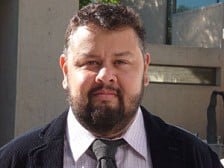A Closer Look: Gilbert Vicario

.floatimg-left-hort { float:left; } .floatimg-left-caption-hort { float:left; margin-bottom:10px; width:300px; margin-right:10px; clear:left;} .floatimg-left-vert { float:left; margin-top:10px; margin-right:15px; width:200px;} .floatimg-left-caption-vert { float:left; margin-right:10px; margin-bottom:10px; font-size: 12px; width:200px;} .floatimg-right-hort { float:right; margin-top:10px; margin-left:10px; margin-bottom:10px; width: 300px;} .floatimg-right-caption-hort { float:left; margin-right:10px; margin-bottom:10px; width: 300px; font-size: 12px; } .floatimg-right-vert { float:right; margin-top:10px; margin-left:10px; margin-bottom:10px; width: 200px;} .floatimg-right-caption-vert { float:left; margin-right:10px; margin-bottom:10px; width: 200px; font-size: 12px; } .floatimgright-sidebar { float:right; margin-top:10px; margin-left:10px; margin-bottom:10px; width: 200px; border-top-style: double; border-top-color: black; border-bottom-style: double; border-bottom-color: black;} .floatimgright-sidebar p { line-height: 115%; text-indent: 10px; } .floatimgright-sidebar h4 { font-variant:small-caps; } .pullquote { float:right; margin-top:10px; margin-left:10px; margin-bottom:10px; width: 150px; background: url(http://www.dmbusinessdaily.com/DAILY/editorial/extras/closequote.gif) no-repeat bottom right !important ; line-height: 150%; font-size: 125%; border-top: 1px solid; border-bottom: 1px solid;} .floatvidleft { float:left; margin-bottom:10px; width:325px; margin-right:10px; clear:left;} .floatvidright { float:right; margin-bottom:10px; width:325px; margin-right:10px; clear:left;}
What are some of the general responsibilities of your new role?
The general responsibility is to know the collection, acquire works for the collection and do special exhibitions that relate to the collection but also to what is happening out in the world of contemporary art.
What is the process of acquiring art like?
It is almost second nature to me now. Here at the Art Center it starts off as a conversation between myself and Jeff Fleming (The Art Center director). Really it is about looking at what has been happening in terms of contemporary art and seeing what could fit with in the collection as it stands here in Des Moines. And it is always with the eye towards something that will be considered a masterpiece in the future. This museum in particular has had a really good record.
What do you look for when trying to find that masterpiece?
That is very tricky; it is almost like trying to look into the crystal ball. But one of the things you start off in doing is looking at where that art has been shown. If he or she happens to be showing with regularity in different cities around the world, that is kind of a good indication that this is somebody who is well respected.
What do you think will be your biggest challenge in your new role?
The big challenges facing any museum curator right now is dealing with the economic downfall. So the opportunities to do big special exhibitions are not going to be there in the next couple of years. But what it is doing is focusing curators to really start looking at what they have and being able to work with that in different ways. It is something all museums are struggling with right now, but the Des Moines Art Center has been really lucky.
You’ve been working this job for about six weeks; do you have a goal that you’d like to achieve in your time here?
My last position was at the Museum of Fine Arts in Houston, where I was actually specializing in Latin American Art. During the five years that I was there I became acquainted with a lot of really interesting young artists, so my goal is really to try to introduce some of those names that are perhaps not so well known, not only in Des Moines but in the U.S. in general. So it is going to be an opportunity to work with artists that this art center hasn’t worked with in the past, thereby deepening and broadening the sorts of artists the museum has been collecting.
Where does your large emphasis on Latin American art come from?
Even though my family is from Mexico, I never wanted to specialize in that, but because I am fluent in Spanish it allows me to have access to artists that most people don’t. There was always really a language barrier that prevented a lot of critical materials to enter into Latin America, not a lot of things have been translated, so then it was difficult for them to be known outside of there. But now things are quite different and things have become so international that it is much easier. A lot of what contemporary Latin American artists and Latino artists are doing is really no different than artists in Europe and the other parts of the world are doing. But there has been, I think, less exposure for them.
What drove you toward this passion for art?
I started off and thought I was going to become an artist, and I went to school at the University of California San Diego and I worked with conceptual artists having no idea what that meant. And once I graduated I kind of knew that being an artist wasn’t something that I was that passionate about, and I realized also that working in a museum had a similar level of creativity, and I suddenly came upon the idea of becoming a curator.
What are some of the ways you try to find an escape from your work?
Traveling has become a big passion, but it always brings me back to work right away, because I always end up discovering or seeing opportunities to discover artists or museums or whatnot. So it always kind of folds back to work.








